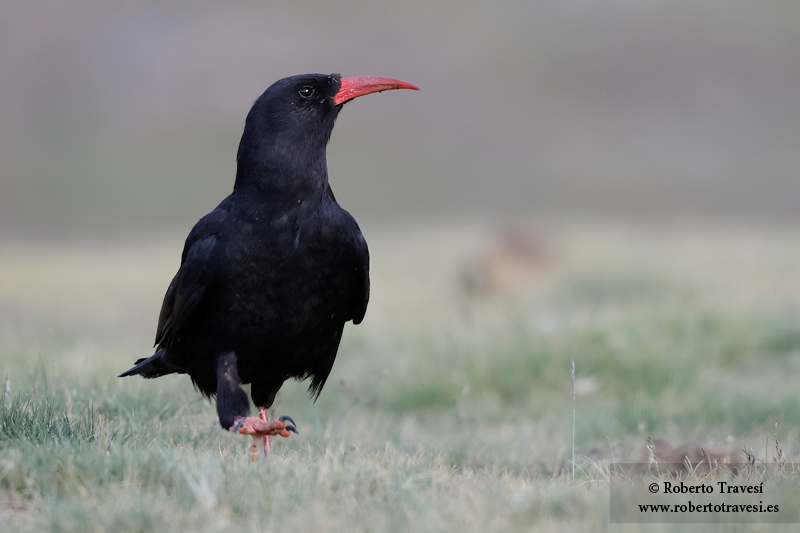
Chova piquirroja (I)
Pyrrhocorax pyrrhocorax subsp. erythrorhamphus es el córvido más representativo de Sierra Nevada, siendo una de sus especies emblemáticas a causa del gregarismo de sus vistosos y escandalosos bandos estivales. Es por tanto una especie estival en la alta montaña, aunque su ecología trófica la lleva a considerarla como esteparia durante el invierno, ya que se alimenta en los llanos cerealistas al pie de la Sierra (como ocurre en el Marquesado del Zenete, donde alguno de sus dormideros acogen a más de 1.000 individuos en diferentes momentos del año). No obstante, es una especie en regresión en buena parte de Europa, siendo considerada desde hace tiempo como especie bioindicadora del estado de conservación de áreas alpinas y subalpinas dedicadas al pastoralismo tradicional y de los sistemas agrícolas sostenibles (1st International Workshop on the Conservation of the Chough, Escocia, 1986). En la imagen, buscando comida en un borreguil de la cabecera del Genil, a casi 2.500 m de altitud (julio 2022).Pyrrhocorax pyrrhocorax subsp. erythrorhamphus is the most representative corvid of Sierra Nevada, being one of its emblematic species due to the gregariousness of its showy and scandalous summer bands. It is therefore a summer species in the high mountains, although its trophic ecology leads it to be considered steppe during the winter, since it feeds on the cereal plains at the foot of the Sierra (as occurs in the Marquesado del Zenete, where some of their roosts host more than 1,000 individuals at different times of the year). However, it is a species in decline in much of Europe, being considered for a long time as a bioindicator species of the conservation status of alpine and subalpine areas dedicated to traditional pastoralism and sustainable agricultural systems (1st International Workshop on the Conservation of the Chough, Scotland, 1986). In the image, looking for food in a "borreguil" (an evergreen meadow of the heights) in the head of the Genil, at almost 2,500 m altitude (July 2022). EOS R3, 1/500 s, f:5.6, ISO 800, 700 mm(imagen sin recorte)(image without cropping)



